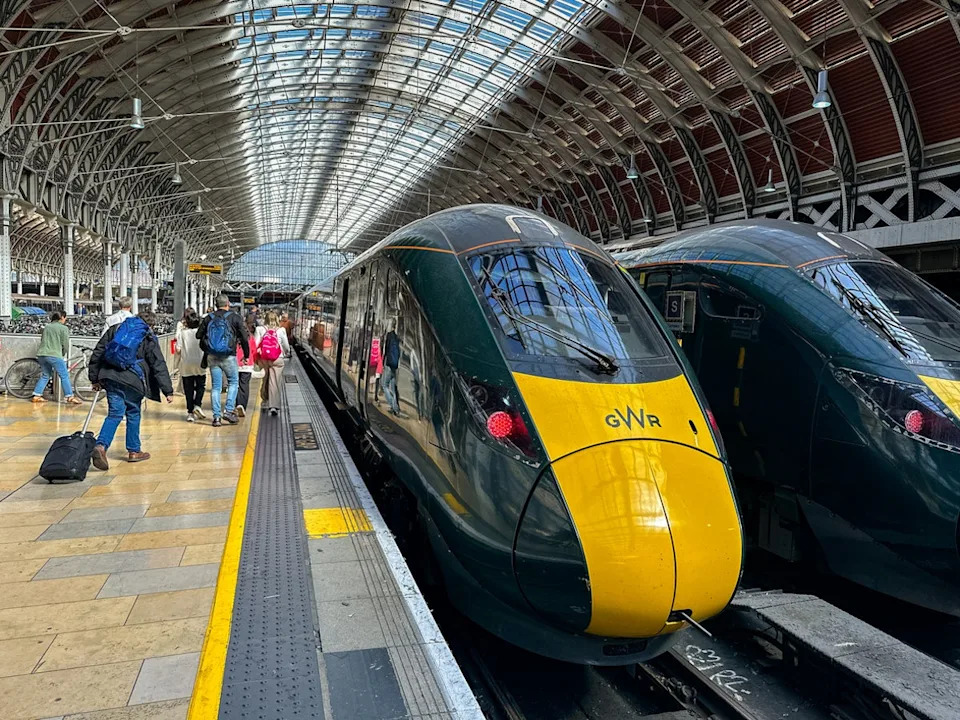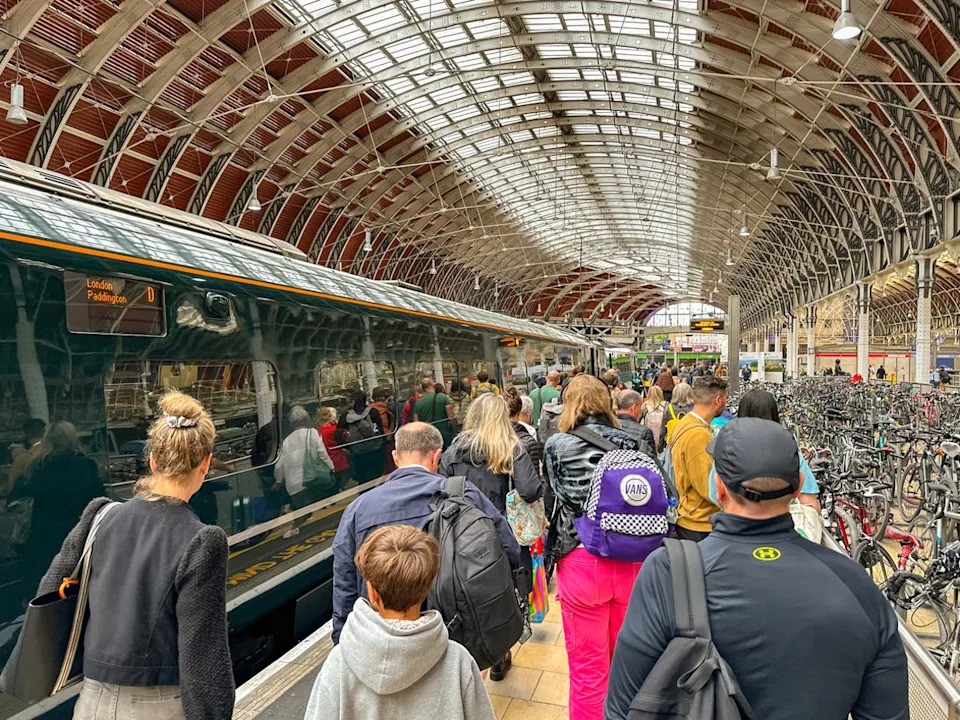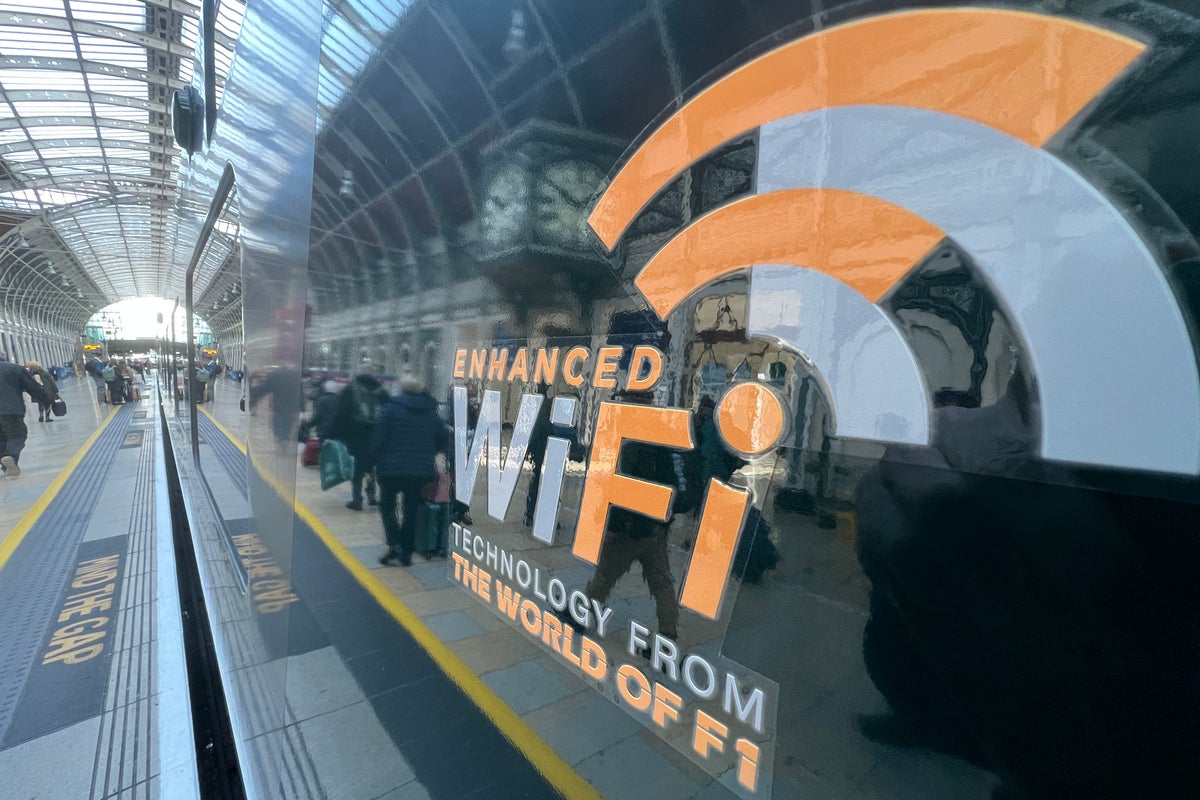Homes Under The Hammer has never looked or sounded better – at least on a train. Speeding at 125mph through sunlit Berkshire on an intercity express to London Paddington, BBC One’s daytime favourite cuts through loud and clear.
In many respects, Isambard Kingdom Brunel was an excellent engineer, connecting London with the West Country via his Great Western Railway. But his 19th-century designs thoughtlessly paid no heed to the 21st-century need for decent wifi on trains.
Brunel’s elegant stations, deep cuttings and (literally) groundbreaking tunnels play havoc with our enjoyment of Martin Roberts’ on-screen disagreement with a developer about the prospects for a flat in Northampton. The challenging terrain also prevents many people from being able to do any meaningful work involving the outside world.
The deeper you get into southwest England, the worse the wifi. “If you can’t improve the journey time, it’s all about improving the time on the journey,” says Nigel Blackler, lead officer for Peninsula Transport.
“That’s about better wifi connectivity both for business users and for leisure travellers.”
Which is why one Great Western Railway (GWR) intercity express, unit 802101, has been kitted out with technology pioneered by Formula 1 racing – to become Britain’s best-connected train.

One GWR train has been kitted out with the F1 technology (Getty Images / iStockPhoto)
Why is wifi on trains so bad?
Regular rail travellers on intercity trains find wifi is usually a serious disappointment. Staying connected with the outside world is tricky and frustrating, with many people simply crossing their fingers and relying on their mobile phone hotspots – which all too often turn into “notspots”.
Steel rail carriages have something of a “Faraday effect” that reduces the penetration of phone signals. The typical passenger might set their sights no higher than trying to send a few emails and do some basic social media stuff.
“On most trains, I think people usually give up,” says Nick Fry – chairman of the communications company Motion Applied. “You try to use your mobile phone as best you can, but the connectivity is often so poor you don’t bother – you’re better off having a nap.”
Yet allowing passengers to be connected while on the move is crucial for the railways. To attract new business, the rail industry needs to show travellers they can make the most of their time on board.

Boosting people’s productivity is the ‘next best thing’ to improving journey time (Getty Images / iStockPhoto)
Boosting people’s productivity is the next best thing. “If you can’t improve the journey time, it’s all about improving the time on the journey,” says Nigel Blackler, lead officer for Peninsula Transport. “That’s about better wifi connectivity both for business users and for leisure travellers.”
Andy Jasper, chief executive of the Eden Project near St Austell in Cornwall says: “I’m often in London, along with a lot of my team. We are forever traveling up and down, and this becomes my office, it becomes my boardroom, it becomes my team’s meeting room, and actually if the wifi is working, it’s fantastic.”
How does the tech work?
“We’re taking Formula One technology and applying it to wifi on trains,” says Nick Fry.
You might imagine top F1 driver Lando Norris and the average passenger on the 1.33pm from Newbury to London Paddington share little in common.
But the Motion Applied boss says: “There are some formidable challenges with both. In Formula 1, the car is going around a circuit at very high speed. On Grand Prix Sundays there are hundreds of thousands of spectators, plus media and cameras, so the airwaves are crowded. That makes communication difficult.
“Trains are actually quite similar: they move quickly, go through cuttings, pass under trees, and carry lots of people.”
The train seeks out the best connectivity at any one moment from a combination of Starlink satellites and 5G phone masts.
“It’s fundamentally different from a normal train wifi system,” says Nick Fry. “On this train there are four pizza-sized boxes on the roof. Each contains antennas and a computer that works out where the best signal is. The boxes talk to each other and, unlike most systems, can connect to either a satellite or a ground station – sometimes both at once. They analyse the signal millisecond by millisecond to give you the best possible performance.”

Game changer? F1 car at London Paddington ahead of the launch of a pilot programme for high-speed wifi (Simon Calder)
“On this train, most people will be able to go about their day-to-day business—talking to family, doing Teams calls, watching a movie. It’s genuinely transformative, and productivity will increase significantly.”
Is it free?
Yes. As with hotels, airports and many similar locations, the public expectation is that wifi is free – and so it is.
How good is the wifi?
Besides watching daytime TV, I also pretended to do some actual work. Connecting to the weekly travel planning meeting with my colleagues at The Independent was simple; the audio occasionally drifted off in the direction of Mars, but that may be our system issue.
Download rates typically measures around 70 megabits per second while travelling at 125mph. That’s the sort of speed (70MB/s, not 125mph) that you’d expect to achieve at home, and is not bad for an office.
Upload speeds are slower. While on the move, a 230MB video interview with Nick Fry took about 45 seconds to upload to a transfer site.
With the railways at present, the best connectivity you will get is at a Network rail station. I am writing at Paddington station, where a check just now revealed a download speed below 15MB/s.
Between Newbury and Reading, the system logged me off, but allowed me back on within a few moments. The pilot will identify any glitches – and also assess how much passengers use the system.

Paddington station has a download speed below 15MB/s (Getty Images / iStockPhoto)
When can I try the new GWR wifi?
The nine-coach train, Unit 802101, will be serving all the Great Western intercity routes between now and January.
Mark Hopwood, managing director of GWR, says: “I completely understand people wanting it immediately, but we still have work to do to understand how it performs, especially with large numbers of users.
“That’s why we’re running the trial – we want to properly learn from it. If the results are good and we conclude the pilot successfully, then we can look at rolling it out. “
If the pilot proves successful, the next step will be for the government to put in tens of millions of pounds to connect, initially, all the Intercity Express Trains across the country, and later commuter services too.
Which train operator does wifi well, and who badly, in your experience?
LNER on the East Coast main line between Edinburgh and London is the outright winner – though you have to upgrade to first class for the best results. Greater Anglia also delivers good results.
Those that I don’t like include Govia Thameslink, which throttles back the wifi after you’ve used a fairly modest amount.
On the Elizabeth line? Well, the east-west link through central London was drastically over-budget and delayed – but demonstrably not because they were spending so much time and money on wifi. I usually don’t even bother trying to get online.
But the cost of communication is on a downward trajectory so things, as they say, can only get better across the nation.
Read more: These are the busiest rail travel days you need to avoid this festive season
